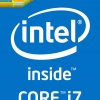-
Posts
55 -
Joined
-
Last visited
Reputation Activity
-
 SuperSoph_WD got a reaction from Anstilion in Lost available space after expanding volume
SuperSoph_WD got a reaction from Anstilion in Lost available space after expanding volume
Hey, Viking!
Sounds like a great NAS configuration you have going on. I did some research for you and came across the RAID calculator from Synology's website:
https://www.synology.com/en-us/support/RAID_calculator
I put your configuration details and compared SHR-2 to RAID 6:
Before you expanded your volume, the comparison between both configurations was identical, both SHR-2 and RAID 6 indicating that you had:
4x2TB + 2x3TB
8 TB - available space
4 TB - used for protection
2 TB - unused space
After expanding, however, SHR-2 definitely has the advantage due to the fact that you don't have any unused space:
4x2TB + 4x3TB
SHR-2
14 TB - available space
6 TB - used for protection
If you decide to rebuild the volume and configure to RAID 6, you will have:
12 TB - available space
4 TB - used for protection
4 TB - unused space
I did some snapshots for you to see the difference for yourself. From what you can see thanks to the RAID calculator, is that in RAID 6 array, you will have 4 TB of unused space. This means that the space can't be utilized and is thus wasted. Plus another 4 TB used for HDD protection. While with the SHR-2 configuration, you just have 6TB used for HDD protection with 14 TB available space.
I think what you are experiencing now is not exactly lost available space, but just space used for protection.
I hope this helps.
SuperSoph_WD
-
 SuperSoph_WD reacted to Giganizer300PRO in Boot priority - Can't set SSD?
SuperSoph_WD reacted to Giganizer300PRO in Boot priority - Can't set SSD?
Never mind...
I figured it out after some time playing around in the BIOS. But it was kinda hidden.
DAT SNEAKY MSI
-
 SuperSoph_WD reacted to Bonesy in Old HDD data to new HDD?
SuperSoph_WD reacted to Bonesy in Old HDD data to new HDD?
I second what SuperSoph says: Keep your new computer new; Re-Install the programs you want, and then transfer specific files as needed.(Address Books, Config Files, etc)
-
 SuperSoph_WD reacted to ForsakenLive in That or this?
SuperSoph_WD reacted to ForsakenLive in That or this?
Get an SSD with a HDD, but for the SSD don't go smaller than 120GB.
-
 SuperSoph_WD reacted to WHOISRYO in Need help putting together a budget video editing PC
SuperSoph_WD reacted to WHOISRYO in Need help putting together a budget video editing PC
hey guys, sorry for the insanely late reply.
just finished assembling the PC. i'ts finally done!
here's the complete hardware list:
CPU: AMD FX 8320
Motherboard: Asus M5A97 R.2.0
RAM: Team Dark 2x8GB DDR3 2133
VGA: HIS R9 270X
PSU: Silverstone OP650
HDD: 500GB WD Black + 1TB WD Green (SSD boot drive is coming once i get extra budget)
Case: Corsair 230T
pretty happy with the build. and yea, thanks so much for all the help and suggestions guys.
couldn't have done it without you
-
 SuperSoph_WD got a reaction from Pig__9_ in 2TB 2.5inch HHDs for Laptops
SuperSoph_WD got a reaction from Pig__9_ in 2TB 2.5inch HHDs for Laptops
Hey there, @Pig__9_!
@Anthony10 gave some pretty good suggestions, since you want to use the drive as a secondary storage. WD Green is designed exactly for that, to keep your massive amount of data safe and sound.
When you open the product page of WD Green drive: http://www.wdc.com/en/products/products.aspx?id=830#
You will find a blue button "Where to buy", click on it and it will tell you all the online stores that have WD Green available; and there's also a tab with local stores, where you can type your location and see if you have a retailer nearby.
Hope this helped.
SuperSoph_WD
-
 SuperSoph_WD got a reaction from maddogl in HDD cloning software
SuperSoph_WD got a reaction from maddogl in HDD cloning software
Hey there, @maddogl! I personally like Acronis True Image when it comes to cloning, it's pretty good and easy to use, you can include or exclude whatever you want from the cloning process. The interface is pretty attractive as well. http://www.acronis.com/en-us Hope this helped. Cheers, SuperSoph_WD -
 SuperSoph_WD got a reaction from InfamousSynergy in SSD vs WD Red VS WD velociraptor for server?
SuperSoph_WD got a reaction from InfamousSynergy in SSD vs WD Red VS WD velociraptor for server?
Hey there, @InfamousSynergy!
As you can see a lot of pros and cons to all the possibilities.
WD Reds are specifically designed for RAID/NAS use and tested in 24/7 environments as well, as you mentioned. However, for gaming I wouldn't recommend them. From what I can see, your focus is on the speed. And since we are talking about a gaming HDD that will fit your budget, you should take a look at WD Black drives. Though it might not be a good idea to put them in a server: http://www.wdc.com/en/products/products.aspx?id=760
The SSD indeed seems like your best option, because you don't need big capacity - just high speed, but as @Dimwitted mentioned if you intend to write to the server constantly, the regular SSD will most probably fail.
WD Velociraptors have impressive speed with 10 000 RPM and Pre-emptive Wear Leveling (PWL) that ensures reliability for your gaming read/write operations. Another upside of those is that they come with a 5-year warranty. http://wdc.com/en/products/products.aspx?id=20
However, if you truly intend for your server to be working 24/7 with a high workload on the storage, I would second the opinion to check out the Enterprise HDDs as well: http://wdc.com/en/products/internal/enterprise/
Hope this helped.
SuperSoph_WD
-
 SuperSoph_WD reacted to Blade of Grass in What Drive Should I Get? A Guide to the Mechanical HD Market
SuperSoph_WD reacted to Blade of Grass in What Drive Should I Get? A Guide to the Mechanical HD Market
Good points, I will do that when I get home -
 SuperSoph_WD got a reaction from Blade of Grass in What Drive Should I Get? A Guide to the Mechanical HD Market
SuperSoph_WD got a reaction from Blade of Grass in What Drive Should I Get? A Guide to the Mechanical HD Market
Wow, really amazing job, @Blade of Grass!
Thank you for doing this guide! Very accurate and well done, pretty professional as well!
However, I have a couple of suggestions you might be interested in:
I'd hyperlink each drive to its web page because it would be much easier for users to just go straight to the product page of the HDD series they want to check out, instead of browsing through all of them.
Also I'd maybe add the Velociraptor to the WD drives because I've noticed there are quite a few people from the community that are interested in those as well.
This should go in sticky indeed!
Cheers,
SuperSoph_WD
-
 SuperSoph_WD reacted to Blade of Grass in What Drive Should I Get? A Guide to the Mechanical HD Market
SuperSoph_WD reacted to Blade of Grass in What Drive Should I Get? A Guide to the Mechanical HD Market
A lot of people have been asking about the difference between specific drives from various manufacturers, so I thought I would create a list of each drive’s use-case scenarios and an overview of their features (sorted by brand):
Information at a Glance
Western Digital
Consumer:
Western Digital Green Series
The WD Green series are high capacity, low cost drives designed for home use. They aren't the fastest, but they are cheap and use low amounts of power. They are generally not recommended for use in a RAID array however, as they lack TLER and have an aggressive spin-down cycle which can result in issues with them being dropped out of an array. More Info
Western Digital Blue Series
The WD Blue series are the "standard" drive in WD’s lineup. They offer a good compromise between price and performance, and are the "normal" drive that you would typically include in an average home computer. More Info
Western Digital Black Series
The WD Black series are high performance consumer drives. They offer high performance, but also come at a higher price than the others. More Info
Western Digital Purple Series
The WD Purple series employ specific features to make them more reliable for 24/7 use in surveillance systems. More Info
Western Digital Red Series
The WD Red series are designed for use in home NAS and servers. They offer a good price to performance ratio, and possess a few features which make them more suitable for RAID arrays such as TLER, higher vibration tolerance (which should result in a longer lifespan), consume less power and are rated for 24/7 use. More Info
Western Digital Red Pro Series
The WD Red Pro series are similar to Western Digital’s Red drives, but are rated for higher workloads and higher performance. WD Red Pros come at a premium price in comparison to WD Red drives. More Info
Western Digital VelociRaptor
The Western Digital VelociRaptor series are designed for use in performance demanding workstations. The drives are designed with a built in heatsink to disperse heat and utilize Preemptive Wear Leveling to increase the speed of read/write operations. More Info
Enterprise:
Western Digital Se Series
The WD Se series are designed for cost effective enterprise server and NAS RAID environments. These drives support a few of the same features as the WD Red Pro series, but are designed for a larger workload in an enterprise environment. WD Se drives also have a higher URE, and should be less prone to bad sectors. More Info
Western Digital Re Series
The WD Re series are designed for enterprise server and NAS RAID environments. These drives are akin to Se but are rated for even higher workloads and have a higher URE. More Info
Western Digital Xe Series
The WD Xe series is WD's top of the line drives for enterprise server and NAS RAID environments which demand the ultimate performance. These drives have the same features as WD Re series, but with the largest workload and have the highest URE of any WD drive. More Info
Western Digital Ae Series
The WD Ae series are designed for enterprise grade cold storage solutions. If you have any data that you will be storing for long periods of time without being accessed, these are the drives for you. More Info
More info: Consumer | Enterprise
Seagate
Consumer:
Desktop (or Barracuda)
The Seagate Barracuda series are Seagate's solution for the desktop environment. They have a low price to performance ratio, and will suit most of your desktop needs. The drives should be able to work in RAID, but are only rated for a maximum of 2 in RAID 1/0, they are also only rated for 8x5 use. More Info
NAS
The Seagate NAS series are designed for use in home NAS and servers. The drives, like Reds, have features that make them favorable for RAID like ERC (Seagate's version of TLER), higher vibration tolerance, consume less power, and are rated for 24/7 use. More Info
Video
The Seagate Video series have specific features enabled to make them more reliable for 24/7 use in surveillance systems. More Info
Enterprise:
Terascale (or Constellation CS)
The Seagate Terascale series are designed for cost effective enterprise server and NAS RAID environments. They have features that make them favorable for use in RAID like ERC, higher vibration tolerance and 24/7 rated use. More Info
Surveillance
The Seagate Surveillance series of drives off the same benefits as the Video series, but are designed for a higher workload in an enterprise environment. More Info
Enterprise Capacity (or Constellation ES)
The Seagate Enterprise Capacity series are designed for use in enterprise server and NAS RAID environments. These drives are akin to Terascale drives, but are rated for higher workloads. More Info
Enterprise Performance
The Seagate Enterprise Performance series are designed for use in a performance demanding, enterprise server and NAS RAID environment. These drives are similar to Enterprise Capacity drives, but are rated for an even higher workload. More Info
-
 SuperSoph_WD reacted to Dimwitted in SSD vs WD Red VS WD velociraptor for server?
SuperSoph_WD reacted to Dimwitted in SSD vs WD Red VS WD velociraptor for server?
Depends on the writes that you do with the server. Most do a ton of writes and will burn out a regular ssd real quick. That's why there are a whole nuther level called enterprise drives that are not usually available to the great unwashed. Expensive, too.
For a hardworking server I would look at the enterprise side of things, not the consumer side. Constellation drives by Seagate. WD has server drives as well. Server grade ssd's by Toshiba, SanDisk or Intel. Be prepared to pony up the cash. At least you only need one!
-
 SuperSoph_WD got a reaction from PoLoMoTo in Migrating RAID 10
SuperSoph_WD got a reaction from PoLoMoTo in Migrating RAID 10
Hey there, @PoLoMoTo!
It really depends on what kind of RAID you have set up.
If you have a software-based RAID, then I think it's possible to transport between the arrays. For example, Windows will ask you to import them and they should be able to rebuild themselves.
However, if you are using a motherboard RAID controller, the new controller won't be able to see the RAID created by your old one. You might have a chance since both motherboards are the same brand, but you have to check if they have the same controller as well. If yes, you might be able to re-create the array and read the meta-data.
Another very brave thing to do is set up the new motherboard and controller with the same settings you used in your old array and hope that it will pick up your configuration.
But before attempting anything whatsoever, I'd advice you to backup your array somewhere else.
Whenever you are migrating, cloning or whatever kind of transporting data you should always do a back up, because the procedures are very delicate.
Good luck! Hope I helped!
SuperSoph_WD
-
 SuperSoph_WD got a reaction from NeatSquidYT in Questions about future possible NAS build
SuperSoph_WD got a reaction from NeatSquidYT in Questions about future possible NAS build
Hey there, @NeatSquidYT!
In theory, yes! But it depends on a lot of factors. The max transfer speed using Ethernet/Gigabit is 1000 Mbps, which with a Wi Fi modem/USB is about 150-160 Mbps.Again it also depends on your Internet service provider... usually both connections will have the same speed if you are limited to a maximum Internet speed of, let's say, 10 Mbps.
But if we are talking about the connections themselves, Ethernet is faster. You will definitely notice difference in speed if you transfer a large amount of data (>4GB), though.
CAT5 enhanced supports networking with Gigabit Ethernet speeds up to 1000 Mbps as I already mentioned; whereas the USB 2.0 theoretically supports a max data rate of 480 Mbps.
I'm sorry to hear about the slow speed transfer of your My Cloud though. You can check out this thread for faster transfer speed ideas:
http://community.wd.com/t5/WD-My-Cloud/Transferring-Large-Amounts-of-Data-to-the-My-Cloud-and-a-Coupl-e/td-p/620219
As for your NAS build, it looks legit. However, I'd probably take another look at the mobo and swap it for a one that has USB headers, you never know when it might come in handy. You might want to have that option, if you later on decide to back up some sort of an external storage or a flash drive onto the NAS.
Hope I helped.
SuperSoph_WD
-
 SuperSoph_WD got a reaction from 565465464 in Migrating RAID 10
SuperSoph_WD got a reaction from 565465464 in Migrating RAID 10
Hey there, @PoLoMoTo!
It really depends on what kind of RAID you have set up.
If you have a software-based RAID, then I think it's possible to transport between the arrays. For example, Windows will ask you to import them and they should be able to rebuild themselves.
However, if you are using a motherboard RAID controller, the new controller won't be able to see the RAID created by your old one. You might have a chance since both motherboards are the same brand, but you have to check if they have the same controller as well. If yes, you might be able to re-create the array and read the meta-data.
Another very brave thing to do is set up the new motherboard and controller with the same settings you used in your old array and hope that it will pick up your configuration.
But before attempting anything whatsoever, I'd advice you to backup your array somewhere else.
Whenever you are migrating, cloning or whatever kind of transporting data you should always do a back up, because the procedures are very delicate.
Good luck! Hope I helped!
SuperSoph_WD
-
 SuperSoph_WD reacted to Anthony10 in 2TB 2.5inch HHDs for Laptops
SuperSoph_WD reacted to Anthony10 in 2TB 2.5inch HHDs for Laptops
There is a Samsung (now Seagate) Spinpoint 9t one and a WD Green one.
-
 SuperSoph_WD got a reaction from Speedbird in WD green Problem
SuperSoph_WD got a reaction from Speedbird in WD green Problem
Hey there, @Aussie Pawz!
As the community already mentioned, you need first to partition and format the HDD before you can actually use it.
I can suggest to take a look at these couple of guidelines that should help you out with that!
How to install a SATA HDD: http://products.wdc.com/library/um/eng/4779-705037.pdf
How to partition and format an HDD on Windows: http://wdc.custhelp.com/app/answers/detail/a_id/3865
I hope you find this helpful. Keep us posted if you need further assistance!
SuperSoph_WD
-
 SuperSoph_WD got a reaction from SirRoderick in PassMark the destroyer
SuperSoph_WD got a reaction from SirRoderick in PassMark the destroyer
Hey there, @ottavianus!
As @SirRoderick already mentioned, I don't think this software can do any harm to the drives. However, the PSU actually can do damage on your system components.
My suggestion would be to test your drives with Data LifeGuard Diagnostics tool:
http://support.wdc.com/product/download.asp?groupid=810
It will give you much more extended and detailed results on your HDDs' health. This is one way to put your mind at ease about the hard drives.
I would definitely check up that PSU though.
Hope this helped.
SuperSoph_WD
-
 SuperSoph_WD got a reaction from ottavianus in PassMark the destroyer
SuperSoph_WD got a reaction from ottavianus in PassMark the destroyer
Hey there, @ottavianus!
As @SirRoderick already mentioned, I don't think this software can do any harm to the drives. However, the PSU actually can do damage on your system components.
My suggestion would be to test your drives with Data LifeGuard Diagnostics tool:
http://support.wdc.com/product/download.asp?groupid=810
It will give you much more extended and detailed results on your HDDs' health. This is one way to put your mind at ease about the hard drives.
I would definitely check up that PSU though.
Hope this helped.
SuperSoph_WD
-
 SuperSoph_WD reacted to Dimwitted in Other drives in a WD 2TB My Book VelociRaptor Duo Thunderbolt
SuperSoph_WD reacted to Dimwitted in Other drives in a WD 2TB My Book VelociRaptor Duo Thunderbolt
Why would you change from one of the fastest drives available? It's like asking if it's ok to change the engine in a Ferrari to a Chevy V8.
-
 SuperSoph_WD reacted to Skiiwee29 in Setting up RAID 0 with 2 120GB SSD's
SuperSoph_WD reacted to Skiiwee29 in Setting up RAID 0 with 2 120GB SSD's
And what exactly was your question?
-
 SuperSoph_WD got a reaction from SeaBriscut in WD Blue vs Black
SuperSoph_WD got a reaction from SeaBriscut in WD Blue vs Black
Hey there, @SeaBriscut!
The community already explained shortly what they are all about. So I can offer you some additional info:
WD Blue is in the sweet spot between performance and resource management, and it is mostly recommended for home systems and everyday computing. There are not that big in capacity (max 1TB) but you will get the solid performance.
http://www.wdc.com/en/products/products.aspx?id=760
WD Black is all about performance and high-end applications. It's a great fit, if you are into gaming and/or heavy softwares. They also offer quite the variety of capacity (anywhere from 500GB to 4TB).
http://www.wdc.com/en/products/products.aspx?id=770
Both drives have 64 MB cache and run at 7200 RPM but WD Black drives have a much better performance in read/write speed.
Hope this answers your question completely.
SuperSoph_WD
-
 SuperSoph_WD reacted to C_Mike in My external hard drive isn't showing up anywhere!
SuperSoph_WD reacted to C_Mike in My external hard drive isn't showing up anywhere!
I probably should have said my drive was a couple years out of warrranty so I had nothing to lose. So yeah, I would take SuperSoph's advice -
 SuperSoph_WD reacted to AlwaysFSX in Just saw Gotham
SuperSoph_WD reacted to AlwaysFSX in Just saw Gotham
Hey, my brain is broken.
I'll give it a go. I wanted to watch it but I didn't know what time it was on.
-
 SuperSoph_WD reacted to Sammael in Just saw Gotham
SuperSoph_WD reacted to Sammael in Just saw Gotham
It is worth the time of all people with good taste. For the rest, no, but those people have other issues to deal with. Like being born with their broken brains.












